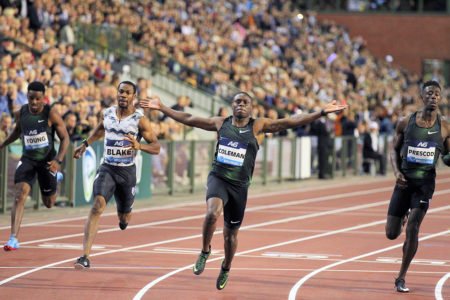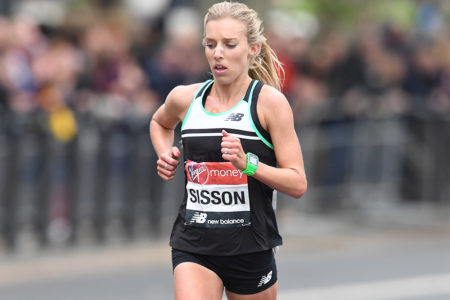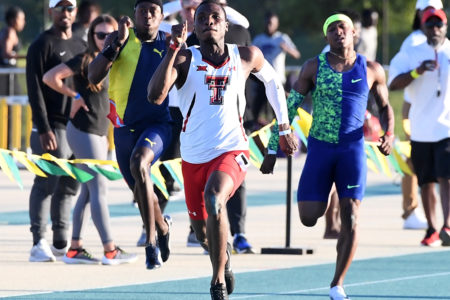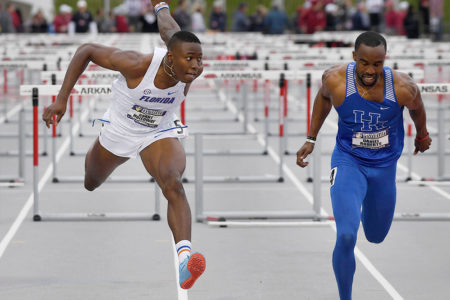
CASTING 800 QUEEN Caster Semenya’s future into doubt and refocusing a hot spotlight of controversy as well as empathy, the Court Of Arbitration For Sport (CAS) ruled on May 1 that the IAAF may enforce regulations barring athletes with 46 XY differences of sex development (DSD) from competing in elite women’s running events at distances between 400 and a mile unless they can show their testosterone levels have not exceeded a specified cap in the 6 months preceding competition.
Semenya’s DSD status is rare but not unique. Francine Niyonsaba and Margaret Wambui, the two medalists behind Semenya at the Rio Olympics are also DSD athletes. Semenya has vowed—with support from the South African federation—to appeal the ruling before CAS’s 30-day deadline, but the decision means that as of May 8 she and other DSD athletes in the specified events must maintain testosterone levels of less than 5 nanomoles per liter (nmol/L). Testosterone levels for most women range between 0.5–1.5 nmol/L while levels of the hormone in men are typically 10–30 times higher, in the range of 10–35 nmol/L. The 3-member CAS panel, which voted 2–1 to support the IAAF’s position—with some reservations—cited testosterone levels for DSD athletes of “7.7–29.4 nmol/L,” markedly higher than most women.
“I know that the IAAF’s regulations have always targeted me specifically,” Semenya said in a statement. “For a decade the IAAF has tried to slow me down, but this has actually made me stronger. The decision of the CAS will not hold me back. I will once again rise above and continue to inspire young women and athletes in South Africa and around the world.” The double Olympic gold medalist raced and won the Doha DL 800 with Niyonsaba 2nd and Wambui 6th in what may well be the trio’s last races at the distance, at least through the expected 6-month adjudication of the appeal. Organizers of the Pre meet announced that Semenya will race in its DL 3000, outside the “restricted” event range, at the end of June.
“The Panel found that the DSD Regulations are discriminatory,” wrote the arbiters in their decision, agreeing with Semenya’s lawyers on that troubling point, “but the majority of the Panel found that, on the basis of the evidence submitted by the parties, such discrimination is a necessary, reasonable and proportionate means of achieving the IAAF’s aim of preserving the integrity of female athletics in the Restricted Events.”
The IAAF sees itself as having acted on the side of women athletes, as it explained in published briefing notes on the matter: “Empowering girls and women through athletics is a core value of the IAAF and the sport and sits at the heart of what all of us in athletics believe the sport can offer to participants and to the world. Because of the effect of testosterone on the body from puberty onwards, men are bigger, stronger and faster on average than women. That is why the female classification is ‘protected,’ and why individuals who identify as female but have a certain difference of sex development (DSD) (which means that they have the same advantages over women as men do over women) can pose a challenge to that protected category. This is why we introduced the eligibility regulation and why it must be defended: to ensure fair competition for all women.”
In essence, the IAAF regulations seek to draw a bright but fair line defining the women’s-competition category. Sports federations have struggled with such a definition for decades, lurching from embarrassing, privacy-invading visual inspections through scientifically unsupportable chromosome testing, and onto the place where the IAAF has landed for the moment. It’s a near certainty that no one has yet had the last word.
For now, though, how may DSD athletes wishing to compete in elite international competition (there are no IAAF-imposed restrictions for domestic meets) become eligible? The IAAF lays that out as follows.
To lower their testosterone levels in this way, affected athletes can either (a) take a daily oral contraceptive pill; or (b) take a monthly injection of a GnrH agonist; or (c) have their testes surgically removed (a ‘gonadectomy’). It is their choice whether or not to have any treatment, and (if so) which treatment to have. In particular, the IAAF does not insist on surgery. The effects of the other two treatments are reversible if and when the athlete decides to stop treatment.
Kenyan star Wambui told Agence France-Presse that her career may be over: “I don’t even feel like going on with my training because you don’t know what you are training for… I am not going to take medication because I am not sick and… those are chemicals you are putting into your body. You don’t know how they will affect you later.” Semenya’s comment on whether she’d opt for a medication regimen was sharp: “Hell, no.”
Even as they endorsed the regulations, CAS arbiters expressed concerns about application of the regulations on three counts:
1. What if an athlete following a testosterone-lowering hormonal protocol in good faith nonetheless fails a test? A ban under such circumstances would be unfair.
2. The panel questioned whether enough statistical evidence exists for a testosterone-imparted advantage in the 1500 and mile. It suggested the IAAF hold off on enforcing the regulations for those distances; the IAAF has rejected the suggestion.
3. Side effects of the hormonal treatments “could, with further evidence, demonstrate the practical impossibility of compliance,” effectively making the regulations as written unreasonably harsh.
Critics of the IAAF’s scientific case to support the regulations—and there is no shortage of those—assert the hard evidence for a testosterone-driven advantage is too thin, that not enough data has been gathered and evaluated. To some non-scientists the assertion is curious since it has long been accepted that exogenous testosterone (not naturally produced in an athlete’s body but introduced in a drug regimen) properly belongs in the banned PED category—for all events, including men. This last point highlights a concern of those who believe the regulations are justified: is it not likely that testosterone above the typical range for women also aids performance in other events, perhaps all events? The IAAF, mindful of shoring up its position, may as time goes by produce further data on that question.
Noted sports scientist Steve Magness, a pro coach and the XC mentor at Houston, summed up current developments succinctly in a thoughtful tweet storm, “Sport is being forced to draw a clear line when the reality is there is no easy delineation, it’s a blurry one… It’s possible to feel empathetic towards Semenya and those with DSD while still wanting some sort of dividing line along sex.” Not everyone agrees, although for now CAS does. Magness’s tweeted conclusion distills one point of near consensus: “There is no easy answer to this situation. It’s easy to have a negative visceral reaction from either side. But this issue is something that needs to be handled with scientific rigor and care.”◻︎






